The Nimzo-Indian Defense is one of the best defenses to the queen’s pawn opening (1. d4).
The opening is a hypermodern style of opening as Black starts by developing their minor piece (knight and bishops) instead of trying to use pawns to control the center.
The opening is named after the chess master, Aron Nimzowitsch who introduced it to the chess world.
The Nimzo-Indian is a very flexible opening that allows Black to choose which style of opening they want to play.
The Nimzo-Indian also has the potential to transpose into openings like the Queen’s Gambit Declined.
The starting moves of the Nimzo-Indian Defense are 1. d4 Nf6 2. c4 e6 3. Nc3 Bb4
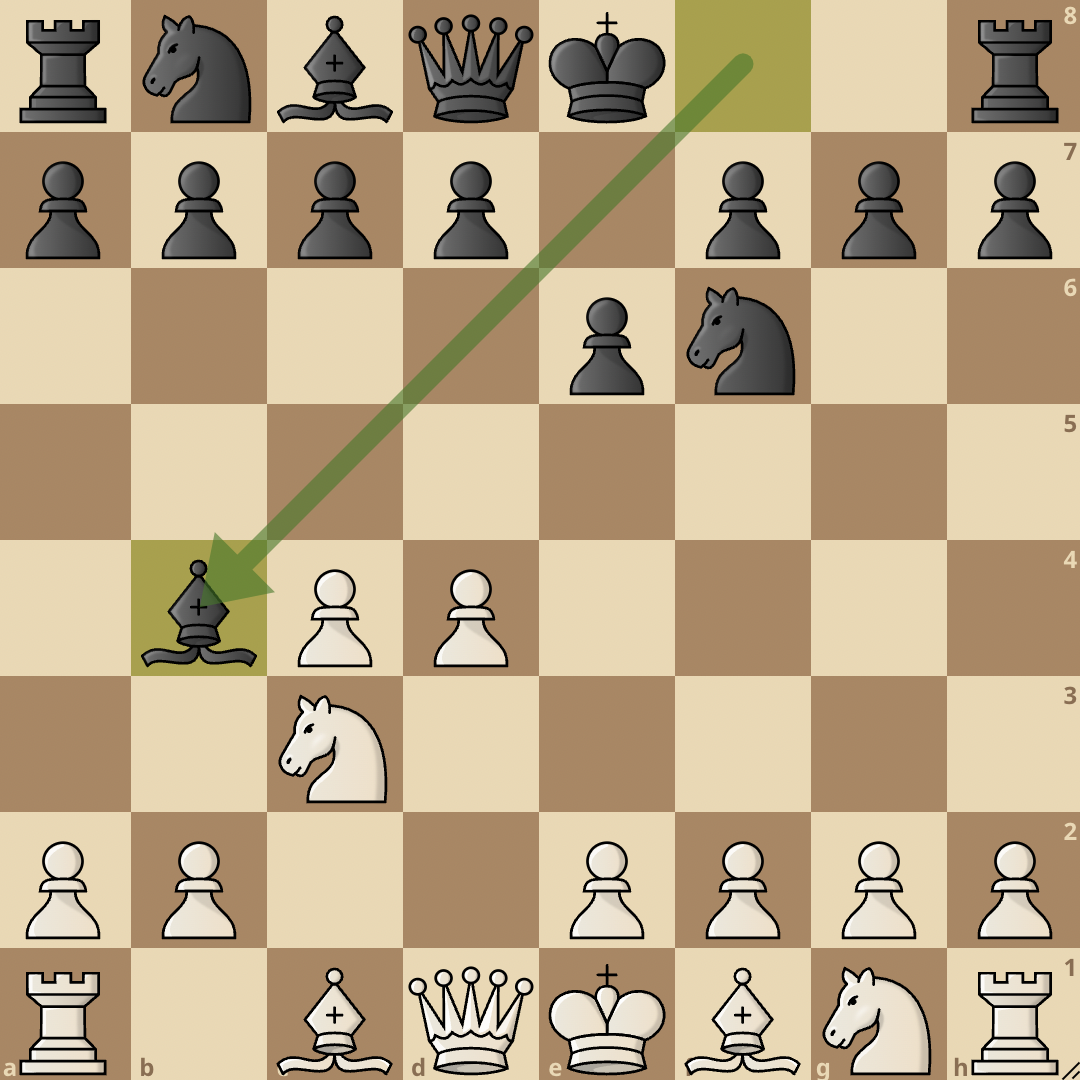
The move 3…Bb4 is what signifies the start of the Nimzo-Indian Defense.
By playing Bb4, Black quickly develops their dark-squared bishop and pins the c3 knight. This pin together with the f6 knight neutralizes White’s control over the e4 square.
Black may decide to capitalize on this pin and put more pressure on the White knight with moves like Ne4.
Another threat Black creates with this pin is that they threaten to exchange their bishop for the c3 knight and double White’s pawns. If this happens, it would result in a weak pawn structure for White leading Black to attack that weakness and capitalize on it.
After 3. Bb4, there are a few popular variations that stem from the Nimzo-Indian. We will now go over them:
- Classical Variation
- Three Knights Variation
- Rubinstein Variation
- Kmoch Variation
Classical Variation
1. d4 Nf6 2. c4 e6 3. Nc3 Bb4 4. Qc2
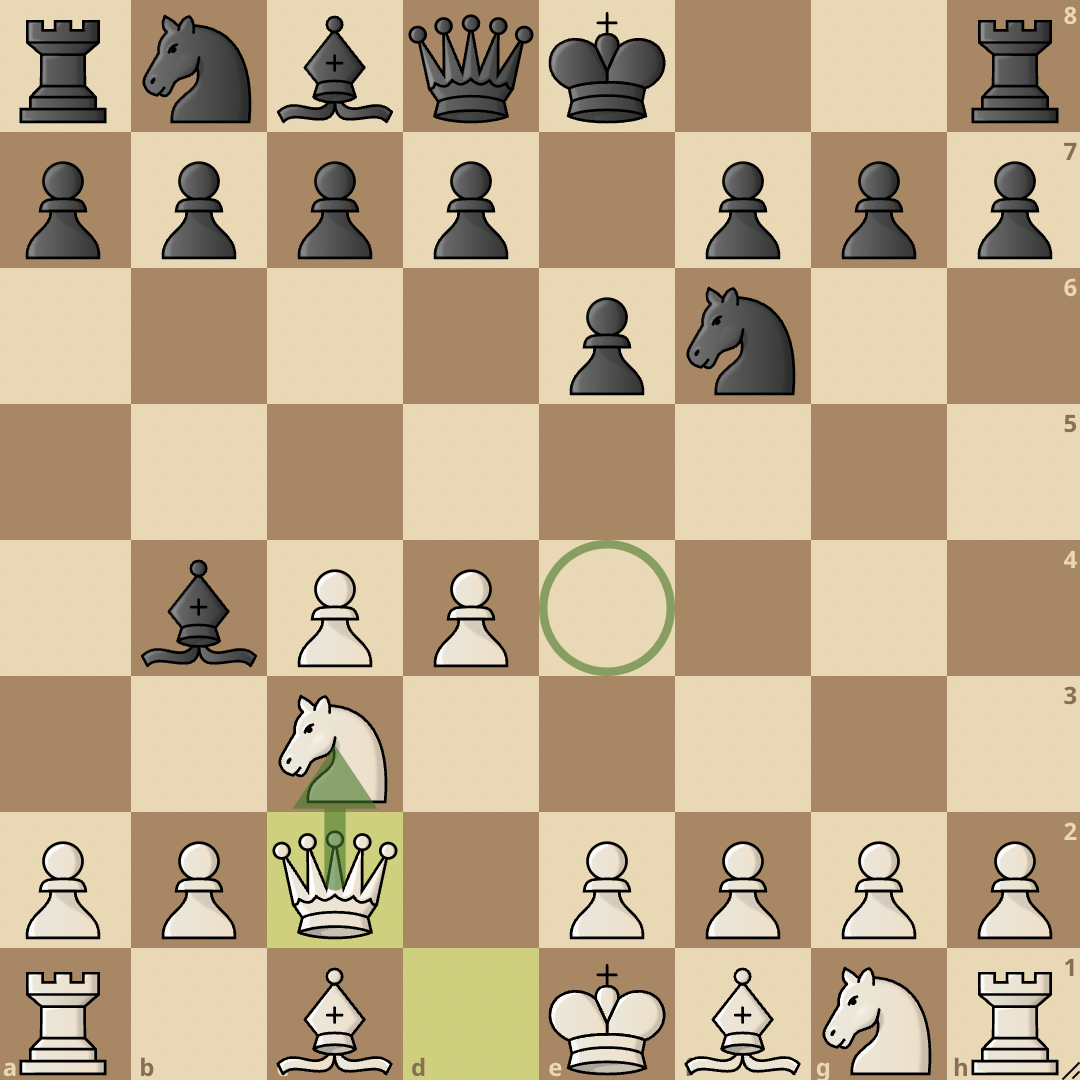
In the classical variation, White continues with 4. Qc2. This move effectively eliminates any possibilities of White getting doubled pawns.
This is because as long as the White queen remains on c2, White can always recapture with the queen and maintain their pawn structure.
The common continuation after 4. Qc2 is for Black to castle with 4…0-0. White then challenges the bishop with 5. a3, asking Black what their plans are. Black captures the knight with 5….Bxc3 and White recaptures with 6. Qxc3.
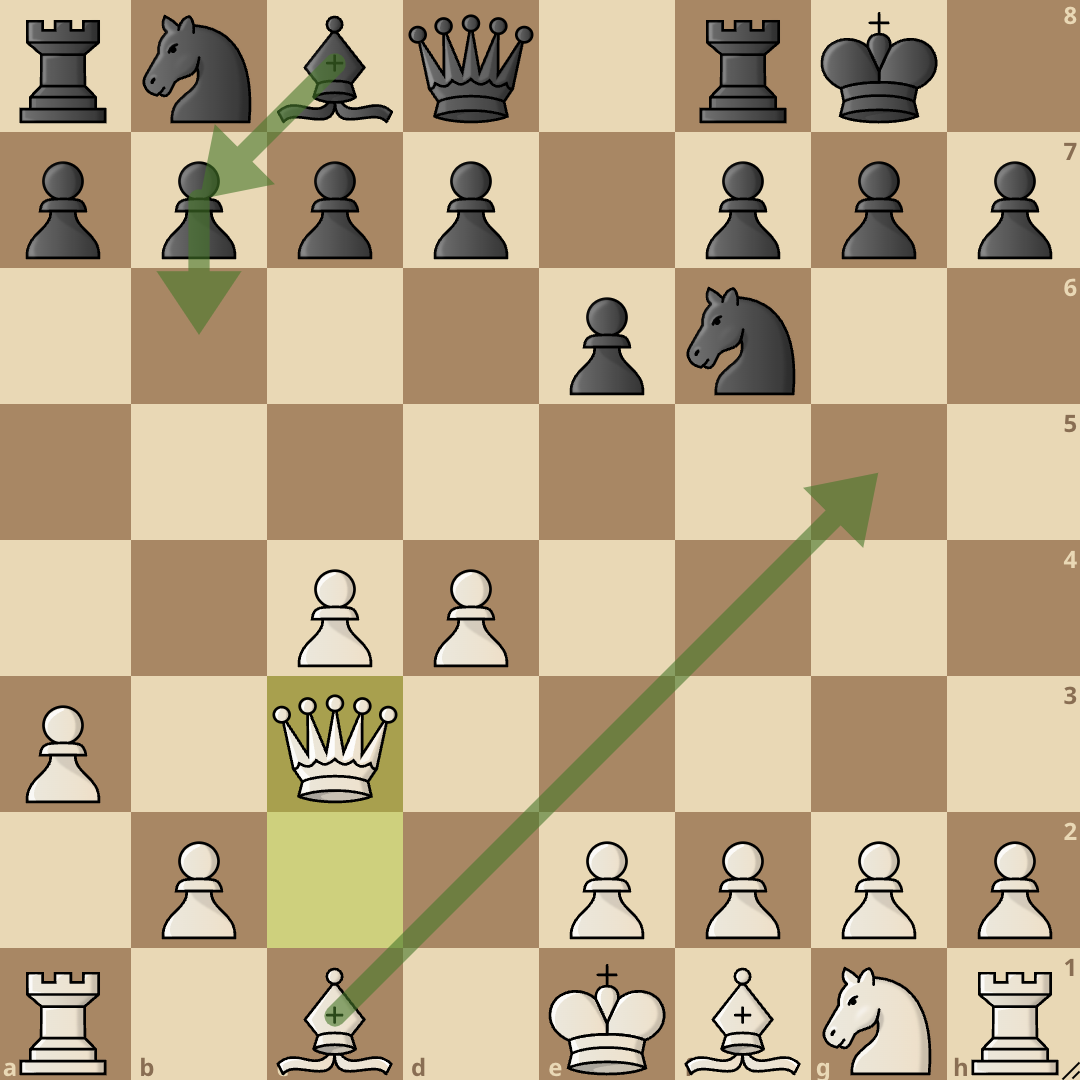
After this trade, White keeps the bishop pair and a solid pawn structure, while Black can boast of better development as they have castled and also have a knight developed on f6.
Since Black has played e6, their light-squared bishop is somewhat restricted. Therefore, they need to find a way to bring it into the game and the best bet is to play 6…b6 and fianchetto the light-squared bishop along the h1-a8 diagonal.
White then continues with 7. Bg5, pinning the f6 knight to the queen and since there is no immediate danger to their position, Black just continues with their plan and they play 7…Bb7. The e4 square is still kept under Black’s gaze.
The dark-squared bishop is developed and away from the starting square, so White can now play 8. e3 and solidify the d4 pawn.
The game will continue with both sides looking to develop their pieces to optimal squares. Black will look to play …d6 and develop their other knight to d7 before going for a center break with …c5.
Three Knights Variation
1. d4 Nf6 2. c4 e6 3. Nc3 Bb4 4. Nf3

The Three Knights variation also known as the Kasparov variation starts with 4. Nf3.
This variation is called the Kasparov variation because former world champion, Garry Kasparov played it a lot in his games, most notably in the 1985 world chess championship against Grandmaster Anatoly Karpov.
Kasparov would win 3 games and get 3 draws in his first six tries with this variation in the match. This impressive showing with the variation increased its popularity.
One popular move here for Black after 4. Nf3 is d5, however, this transposes into a variation of the Queen’s Gambit known as the Ragozin variation.
Therefore, we are going to look at three different continuations for Black that continue in the spirit of the Nimzo-Indian.
4…c5

4. Nf3 c5 5. e3 0-0 6. Bd3 d5 7. 0-0 Nc6 8. a3 Bxc3 9. bxc3
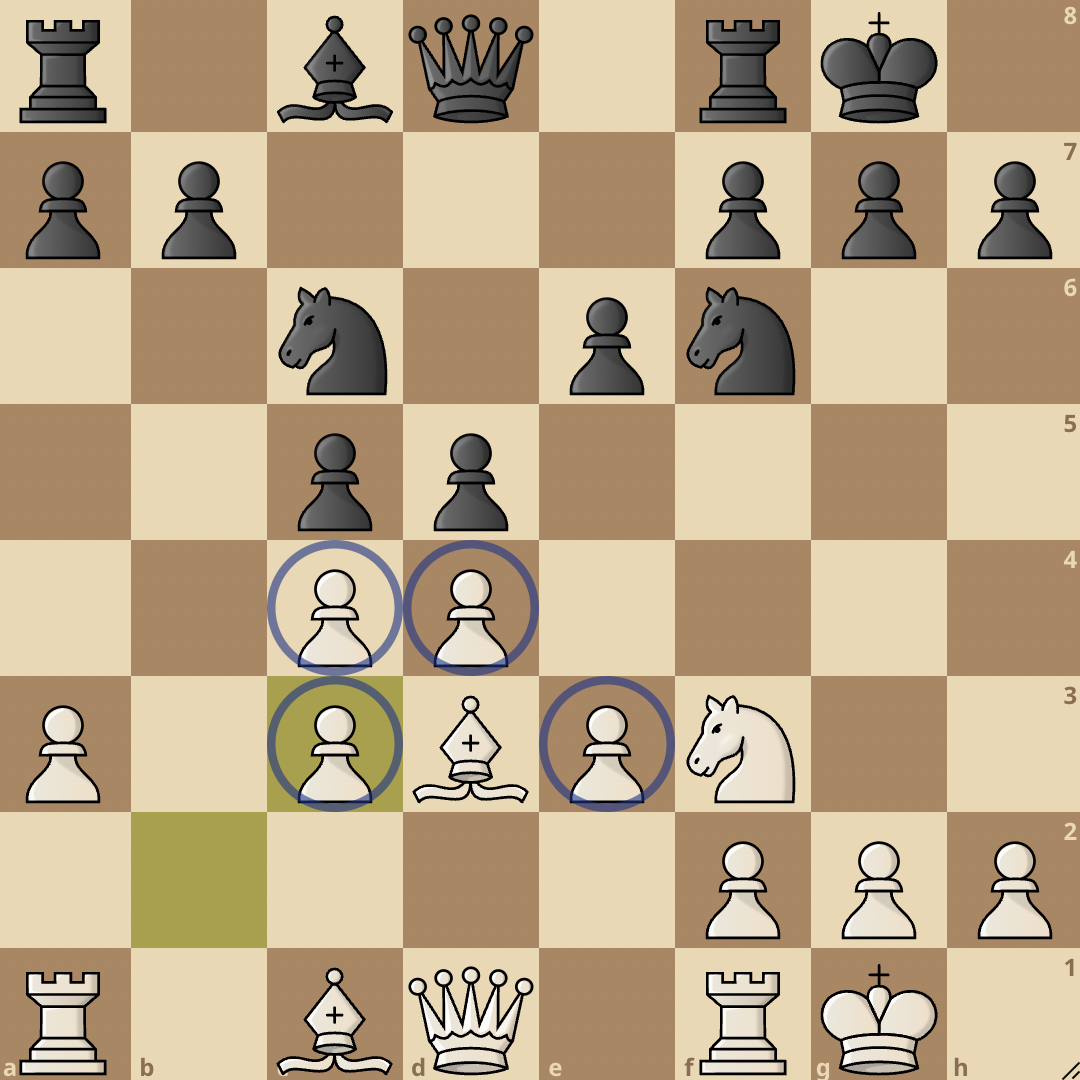
After 4. Nf3, Black can decide to strike in the center with 4…c5 and challenge White’s central control.
White will defend with 5. e3, solidifying their d4 pawn. Black will then castle with 5…0-0 and White continues with 6. Bd3.
Black then strikes with another attack in the center with 6…d5. White does not want to break the tension just yet so they simply castle with 7. 0-0.
Black develops a piece with 7…Nc6 and White now threatens to capture the b4 bishop with 8. a3 and Black exchanges with 8…Bxc3.
White does not mind playing 9. bxc3 and doubling their pawns as they can easily exchange one of the doubled pawns by capturing in the center.
The resulting position as shown above is quite dynamic and can go in either side’s favour. Black needs to find a way to develop the light-squared bishop while White needs to do same with the dark-squared bishop.
4…0-0
1. d4 Nf6 2. c4 e6 3. Nc3 Bb4 4. Nf3 0-0
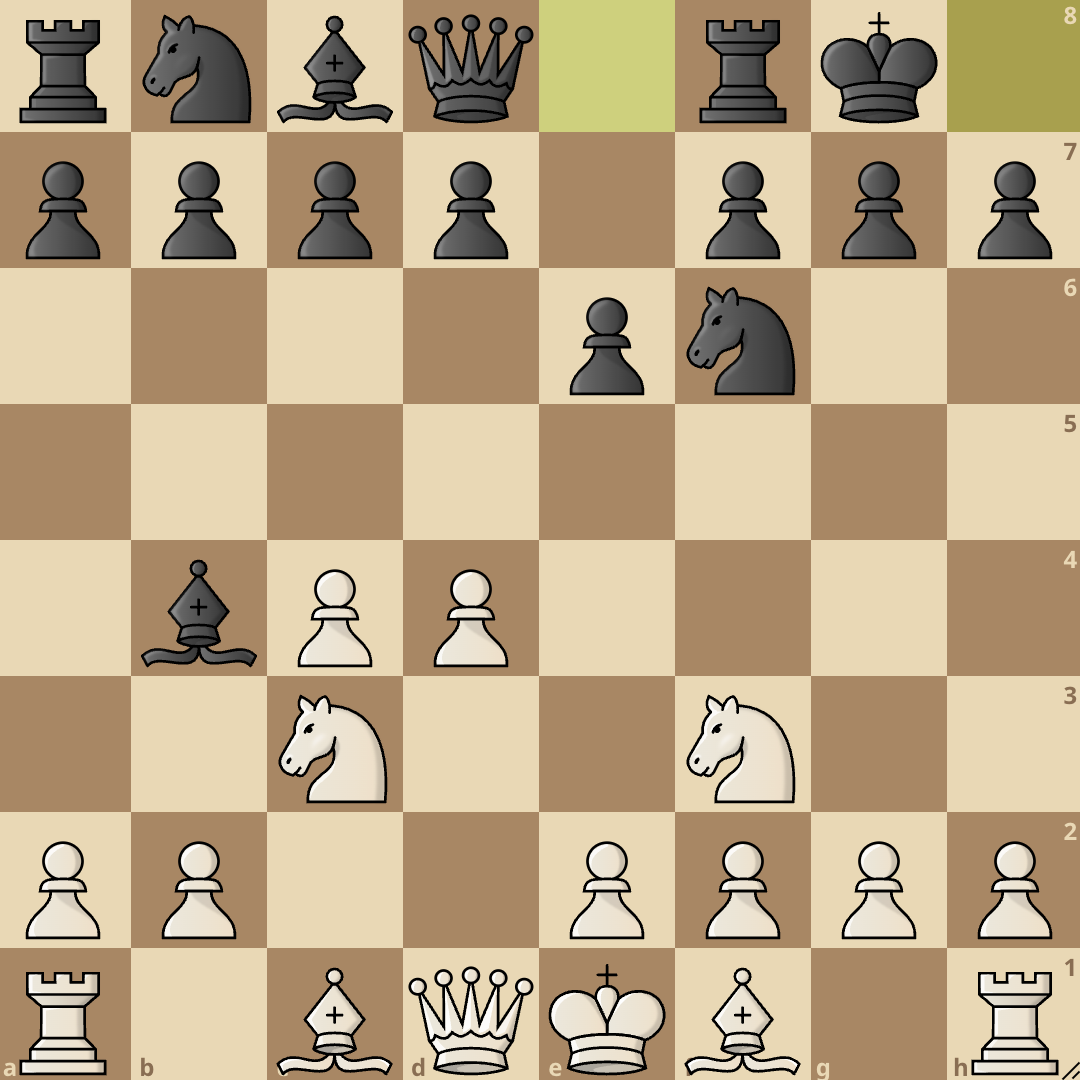
Rather than going for a center break immediately after Nf3, Black can decide to castle first with 4…0-0.
White continues with 5. Bg5 and only now does Black attack the center with 5…c5. White plays 6. e3 and a trade happens in the center with 6…cxd4 and 7. exd4.
Black will attack the center again with 7…d5 and after 8. Rc1 h6, White has to either retreat with their bishop or capture the f6 knight.
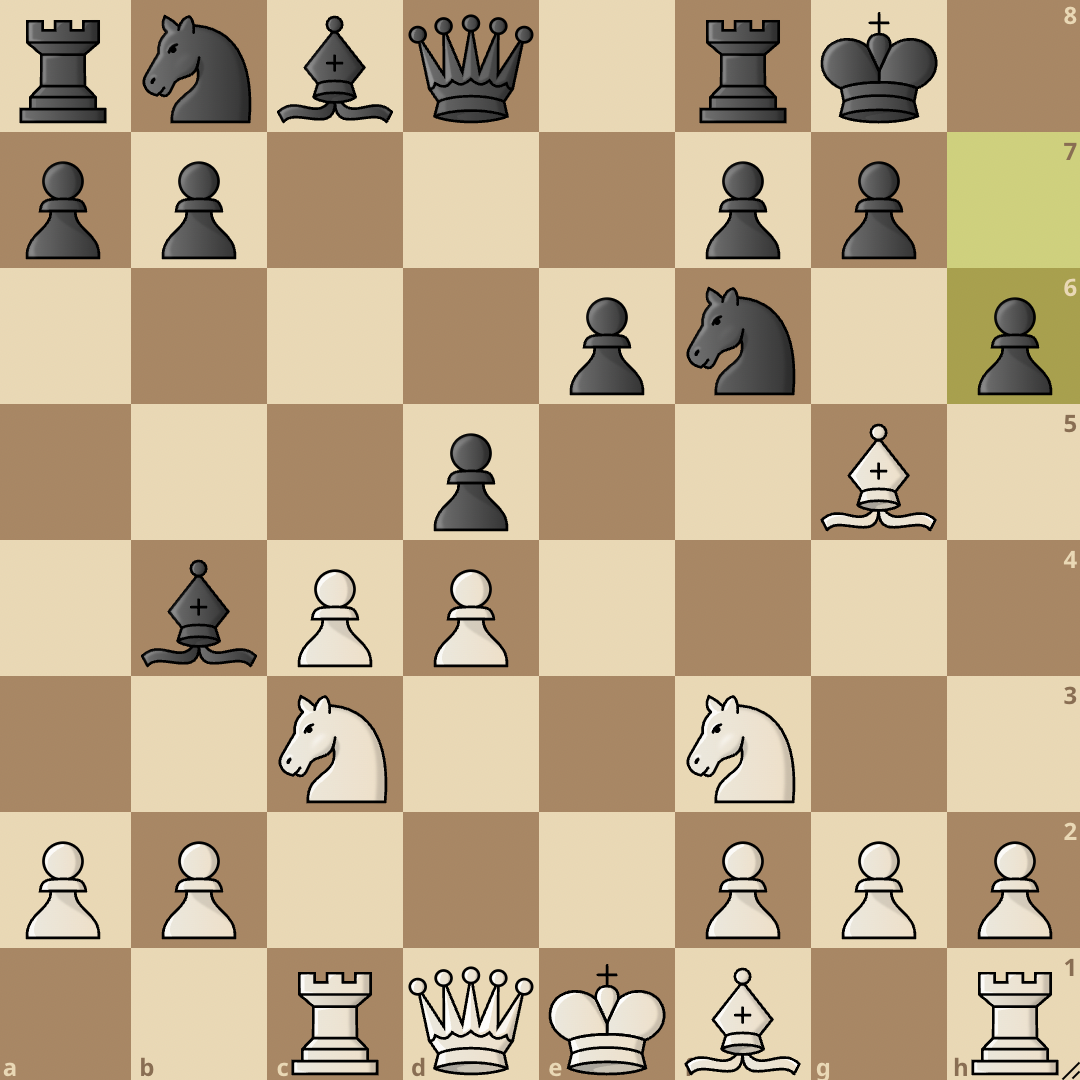
…and the game continues with both sides having an equal position.
4…b6
1. d4 Nf6 2. c4 e6 3. Nc3 Bb4 4. Nf3 b6

4…b6 is another variation Black can go for. Here, Black plays 4…b6 and prepares to fianchetto their light-squared bishop.
White continues with 5. Bg5, pinning the f6 knight to the queen. Black then fianchettoes their bishop with 5…Bb7.
White plays 6. e3 and Black now kicks the dark-squared bishop back with 6…h6 and after the bishop moves back with 7. Bh4, Black attacks the bishop again with 7…g5, pushing it all the way back to g3.
From here, Black will most likely castle queenside since they have expanded so much on the kingside.
Rubinstein Variation
1. d4 Nf6 2. c4 e6 3. Nc3 Bb4 4. e3
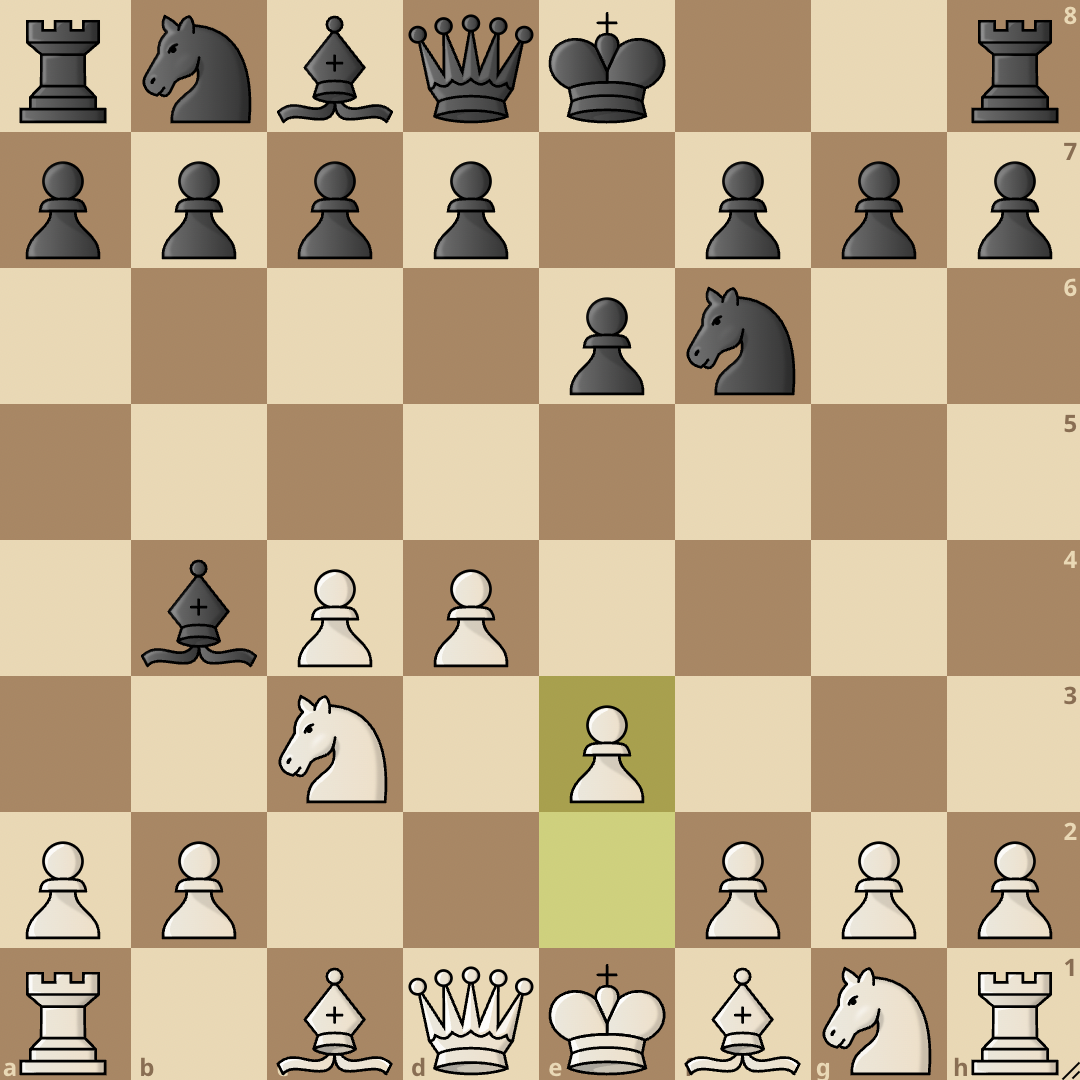
In the Rubinstein variation, White decides that …Bxc3 from Black is not an immediate threat and instead decides to solidify their d4 pawn with 4. e3.
e3 also opens up lines for the light-squared bishop to come into the game. The bishop usually goes to d3, from where it helps to control the e4 square.
Black can either choose to castle kingside, play …c5 and put pressure on White’s center, or play …b6, fianchetto their light-squared bishop, and contest the e4 square with White.
Kmoch Variation
1. d4 Nf6 2. c4 e6 3. Nc3 Bb4 4. f3

The Kmoch variation is another option for White against the Nimzo-Indian. By playing 4. f3, White gains a very strong control over the e4 square with ideas of making the e4 thrust.
Black usually plays 4…d5, to stop the e4 thrust. White usually continues with 5. a3, threatening the bishop and Black captures the knight with 5…Bxc3+.
White would have to double their pawns, however this won’t be much of a problem as they can easily trade one of the doubled pawns.
Successful Deployments
Touch the moves or move the board around for a better interactive experience.
Hikaru Nakamura v Magnus Carlsen, Zurich Chess Challenge (2014)
When Hikaru and Magnus met in the 2014 Zurich Chess Challenge, Magnus decided to go for the Nimzo-Indian and Hikaru chose the Kmoch Variation.
It was a well-fought game that featured opposite side castling and a fierce fight, ultimately Carlsen came out on top.
Garry Kasparov v Anatoly Karpov, Karpov – Kasparov World Championship Match (1985)
The Three Knights variation of the Nimzo-Indian began to be called the Kasparov variation after the 1985 World Championship as Kasparov used it to great effect against Karpov. This game is an excellent example of how to get a win using the Kasparov variation.
Magnus Carlsen v Vladimir Kramnik, Amber Tournament (Blindfold) (2009)
It’s quite rare to see Magnus Carlsen get beaten in 20 moves however, in the Amber Blindfold Tournament, Vladimir Kramnik played an excellent game against the classical variation of the Nimzo-Indian and won a nice game.
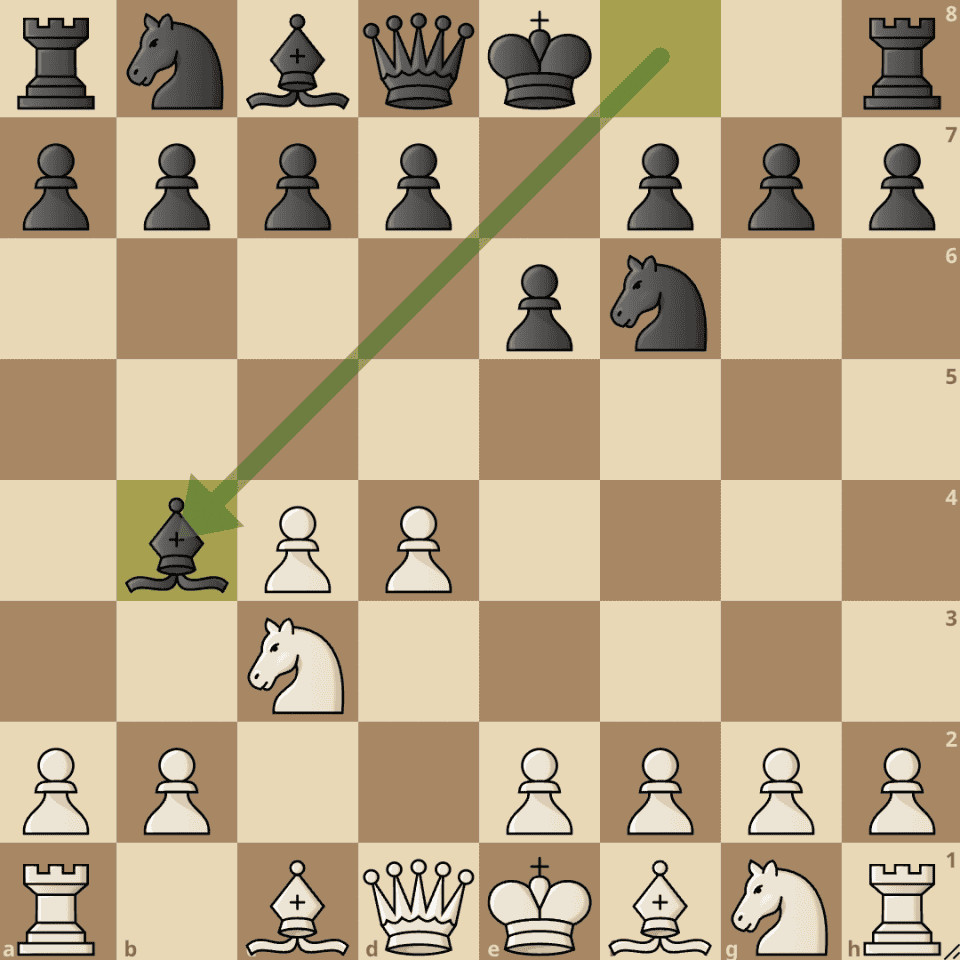




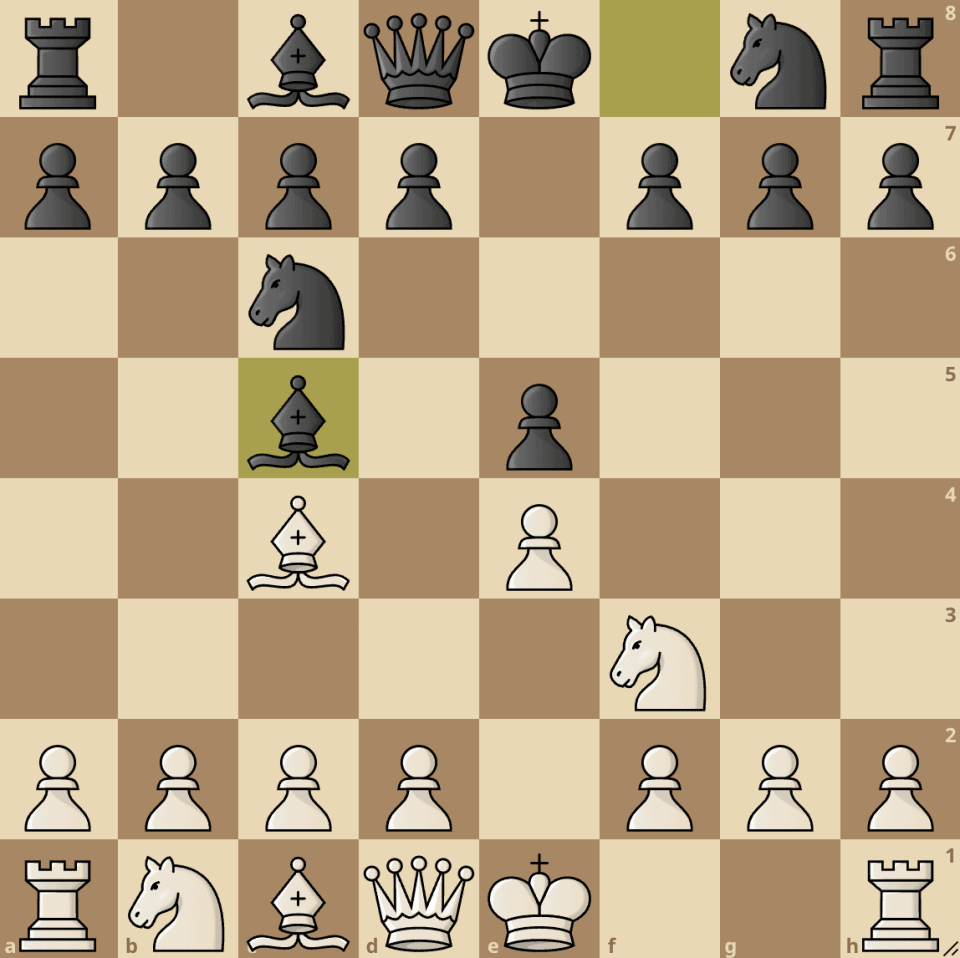

join the conversation